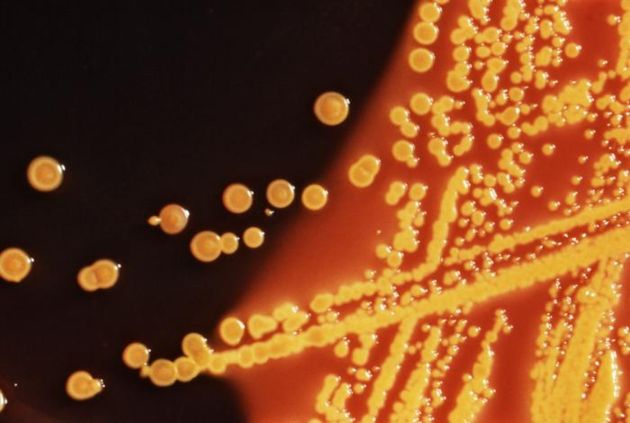Antiviral Paint Kills Flu on Contact

A remarkable new anti-viral polymer can be applied like paint and could help reduce the spread of germs in public areas and hospitals. The "biocidal paint" was developed by MIT's Alexander Klibanov.
In a graphic demonstration (see photo), a regular commercial glass slide and another one coated with alkylated PEI "paint" were sprayed with aqueous suspensions of Staphylococcus aureus cells, and then incubated. Some 200 bacterial colonies are seen on the unprotected slide—and only 4 on the protected one.
Klibanov writes:
Our recent studies have resulted in a new, "non-release" strategy for rendering common materials (plastics, glass, textiles) permanently microbicidal. This strategy, involving covalent attachment of certain long, moderately hydrophobic polycations to material surfaces, has been proven to be very effective against a variety of pathogenic bacteria and fungi, both airborne and waterborne. This work continues along with a quest for creating material coatings with anti-viral and anti-sporal activities.
Klibanov and his colleagues found that the prickly polymer worked on bacteria; they tested it with the smaller flu virus and found the same effects. They applied droplets of a flu solution to glass slips painted with the polymer. After a few minutes' exposure, they were unable to recover any active virus from the samples, meaning the coating reduced the pathogen's abundance by at least a factor of 10,000.
How does it work? In the case of bacteria, the polymer seems to gouge holes in a microbe's cell wall and then spill out its contents. The polymer molecules stay rigid because they are all positively charged and repel each other; they are like strands of hair standing on end from a static charge. The spikes have sufficiently few charges, however, that they can breach bacterial walls, which repel strongly charged molecules. The polymer probably neutralizes flu because the virus has an envelope around it suitable for spearing, Klibanov says.
Take a look at these stories of interest:
- First Motor Powered By Living BacteriaAmazing new motor powered by hard-working bacteria.
- Humans Teach Bacteria New Language A group of scientists lead by Professor James C. Liao are engineering an artificial cell-to-cell communication network by teaching bacteria to communicate with each other and to work together in a whole new way.
- Implanted Biothermal RFID Chips May Warn Of Avian Flu Digital Angel, which makes VeriChips for humans, suggests using its thermal biosensing chips to check chickens for avian flu.
From Scientific American via MedGadget.
Sign up for the Live Science daily newsletter now
Get the world’s most fascinating discoveries delivered straight to your inbox.
(This Science Fiction in the News story used with permission from Technovelgy.com - where science meets fiction.)










